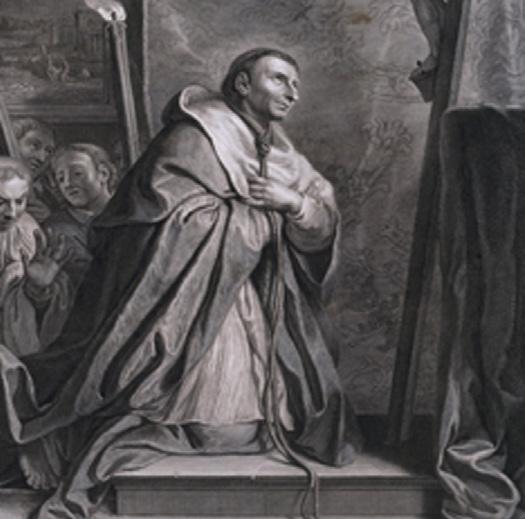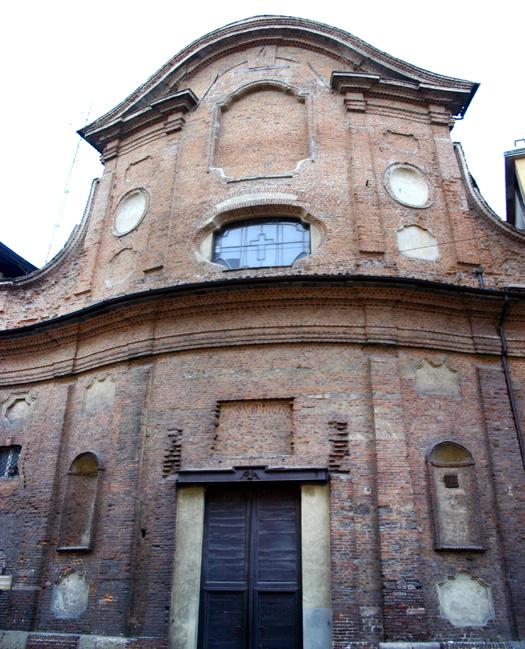
3 minute read
by Fr Ivano Millico 8
only accessible by a gate. Every day Borromeo went to visit the sick and when the building overflowed with plague victims and the gate was barred, the Archbishop walked around its perimeter, praying as the lamenting inmates were begging for a blessing.
To shelter the sick, Borromeo bought six large plots of land outside the city walls, building wooden huts thatched with straw. When supplies ran out, he begged for money (especially at Rome from generous Cardinals), organised special collections across his own diocese, sold his own personal possessions, including the gold and silver ornaments of his private chapel, and even tore down drapes from his residence to use them as material to care for the sick in the leper houses. Appealing to his priests, he said: ‘We have only one life and we should spend it for Jesus Christ and for souls, not as we wish, but at the time and in the way God wishes. It would show great presumption and neglect of our duty and God’s service to fail to do this, with the excuse that God could not replace us by others more capable of working for His glory. This does not mean you should neglect human means, such as preventatives, remedies, doctors, everything you can use to keep off infection, for such means are in no way opposed to fulfilling our duty. God can replace us!’ At the call of many of his brother bishops, including the Pope, who begged him not to put his life in danger and urged him to use all possible caution, Borromeo answered: ‘From the beginning, I resolved to place myself entirely in God’s hands, without however despising ordinary remedies … a sponge soaked in vinegar and a few aromatic herbs in my mouth!’
As the only effective authority left in the city, Borromeo gathered a scientific commission of professors and physicians to advise him on how best to keep the infection at bay. A ‘plague directory’ was published, and reissued in 1630 when yet another plague struck Milan. He urged the Milanese to carry out corporal works of mercy, wrote and distributed a small booklet as a spiritual insurance policy for those left with no access to the sacraments, and gave dispensations to the clergy to administer the sacraments in all circumstances, with the granting of special indulgences. Thus it became normal to see priests baptising, hearing confessions and giving holy communion in the streets of the city. Borromeo himself administered the sacraments to the afflicted and when he found doors barred, he was seen entering the infected huts through the windows, making use of a ladder! Nonetheless, he would take all necessary hygiene precautions. For himself, he acted as if he were actually infected, allowing no one to come near him, keeping (in his days) to the ‘rule of eight’ in his household. Walking in the city, he made sure that social distancing was kept, accompanied by a servant waving a stick to make sure no one would get close to touch his robe or beg for a blessing. He would give alms only by placing coins in jars of vinegar, often changed his vestments, sanitised everything with vinegar and fire, and carried with him a sponge soaked with vinegar and other herbs regarded as disinfectants. How familiar is all of this!
Taking advantage of a moment of alleviation in the contagion, Borromeo led three large penitential processions from the Duomo, with social distancing rules. All began as on Ash Wednesday, with blessed ashes imposed on the people’s heads, with a call to penance and conversion to newness of life. He then walked barefoot through the city with a rope around his neck, like a condemned criminal, carrying in his hand a crucifix (preserved to this day in the sacristy of the Duomo) and singing ‘Have Mercy on us, Have mercy on us’. Some of his contemporaries accused him of having favoured the spreading of the pestilence by assembling people in processions and public prayers. In fact, the processions dispersed fears and encouraged the faith of the Milanese that the pestilence would, by the grace of God, finally come to an end.
St Charles, as a penitent, prays before a crucifix.

The present church of Santa Maria della Sanità in Milan dates from 1707










